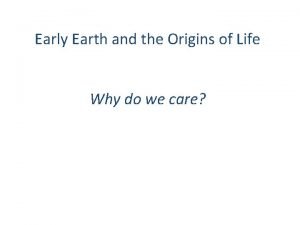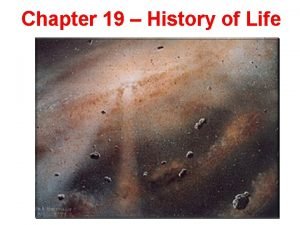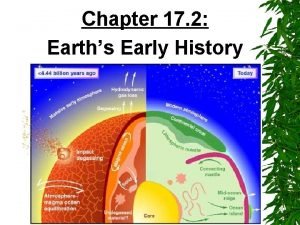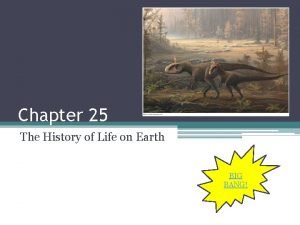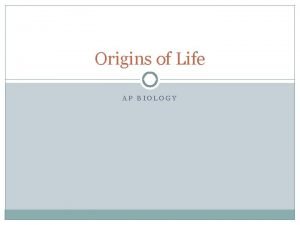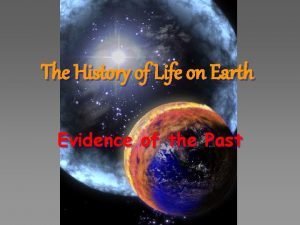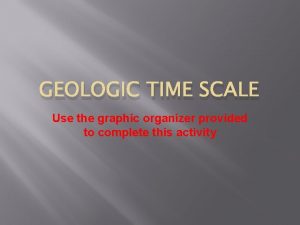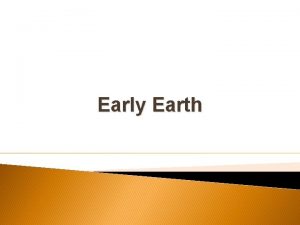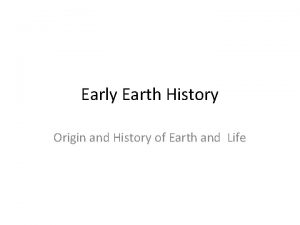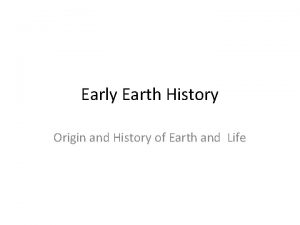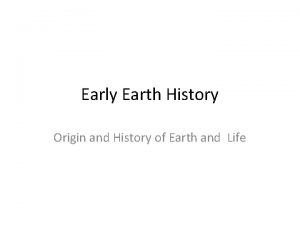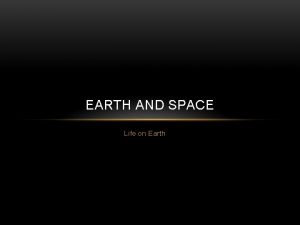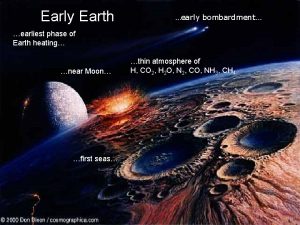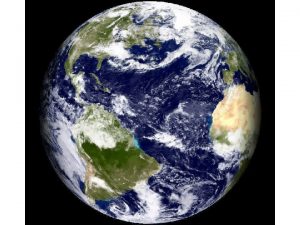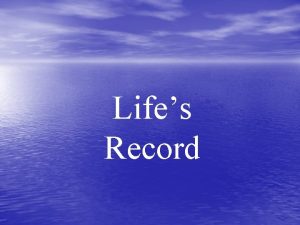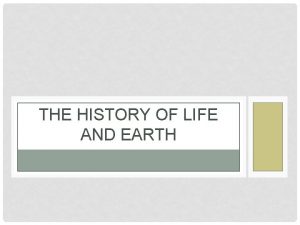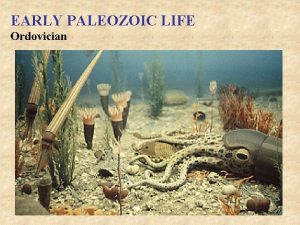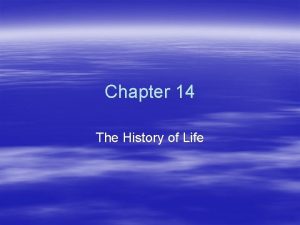The History of Earth and Life Early History



















- Slides: 19

The History of Earth and Life

Early History of Earth � Though we can’t be certain, scientists have suggested that the earth was very hot due to volcanoes and meteorites hitting the earth � Sometime around 4. 4 billion years ago, the earth appears to have started cooling, leading to water condensation and ocean formation

History in Rocks � There is direct evidence of life’s existence 3. 9 billion years ago found in the oldest rocks found on earth � Fossils provide this evidence

Fossils A fossil evidence of an organism that lived long ago found embedded in rock � Fossils provide clues to what life looked like long ago � There are 5 different types of fossils � › › › 1. Trace Fossils 2. Casts 3. Molds 4. Petrified/permineralized fossils 5. Amber preserved or frozen


Paleontology � Is the study of fossils in order to understand events and organism of long ago � Fossils indicate what animals looked like, how big they were, how they moved, climate and more

Fossil Formation � For fossil formation, organisms typically need to be buried in sand or mud and have more deposits on top of them � Compression from above layers causes the organism to harden and turn into rock � Sedimentary rock offers low temperatures and pressures which help with fossil formation

How do we know how old something is? � Scientists utilize 2 types of dating to determine age of fossils › 1. Relative Dating › 2. Radiometric Dating (carbon dating)

Relative Dating � Utilizes fossils position in rock layers to determine relative age � So if soil is undisturbed, then › 1. Deeper fossils are older › 2. fossils in the same level are of the same age

Radiometric Dating � Scientist use rocks near the fossils and analyze their chemical composition to determine age base on radioactive isotope ratios � Radioactive chemicals decay at a constant rate and based on istopte composition age determined easily � Half lives are used to calculate age

Half lives �A half life is the time it takes half (50%) of the radioactive isotope to a new isotope after it decays � For Example › Potassium 40 decays to Argon 40 with a half life of 1. 3 billion years › Radioactive Carbon 14 decays with a half of life of 5730 years

Carbon 14 vs Potassium 40 � Carbon 14 is used to date things 60, 000 years ago or younger � Potassium dates things that are much older

Practice � If a rock is found that has 25% composition of the original carbon 14 (with 75% already decayed), how old is it? (half life is 5730 years) After 5730 years= 50% C 14 to 50% decayed � After 5730 more years= 25% 14 to 75% decayed � � So 5730 + 5730 = 11, 460 years old

Earth’s time scale

Life during the Precambrian (4000 -543 million years ago) � Era where the oldest fossils are found � Photosynthetic bacteria (stromatolites) are found in rocks this old � All life is unicellular, but as time progresses the fossil record shows a shift from prokaryotes to eukaryotes � Near the end, sponges and jelly fish are found

Diversity during the Paleozoic (543 -248 mya) � First vertebrates (fish) appear � First amphibians � First seed plants � First reptiles � First conifers appear � Ended with the largest mass extinction know to earth (about 90% all species went extinct

Diversity during the Mesozoic � First dinosaurs � First mammals (small) � First flowering plants � First birds � Ended with another mass extinction that killed most dinosaurs (75% of life extinct) � First evidence of continent seperation

Diversity during the Cenozoic (65 mya to current) � Mammals begin to flourish and take on all sizes � Primates appear � Human fossil are found starting about 200, 000 years ago

Pangaea � The continents together before they divided � Every continent is slowly shifting currently This leads to earth quakes and rising mountain ranges
 Origins
Origins Section 17-2 earth's early history answer key
Section 17-2 earth's early history answer key 17-2 earth's early history
17-2 earth's early history Section 17-2 earth's early history
Section 17-2 earth's early history Early cpr and early defibrillation can: *
Early cpr and early defibrillation can: * Discovery education
Discovery education Aerobic bacteria
Aerobic bacteria The history of life on earth
The history of life on earth Eon split
Eon split Isaac newton early childhood
Isaac newton early childhood Graphic organizer about geologic time scale
Graphic organizer about geologic time scale Faith reason and earth history pdf
Faith reason and earth history pdf Hát kết hợp bộ gõ cơ thể
Hát kết hợp bộ gõ cơ thể Ng-html
Ng-html Bổ thể
Bổ thể Tỉ lệ cơ thể trẻ em
Tỉ lệ cơ thể trẻ em Voi kéo gỗ như thế nào
Voi kéo gỗ như thế nào Tư thế worms-breton
Tư thế worms-breton Bài hát chúa yêu trần thế alleluia
Bài hát chúa yêu trần thế alleluia Các môn thể thao bắt đầu bằng tiếng nhảy
Các môn thể thao bắt đầu bằng tiếng nhảy
